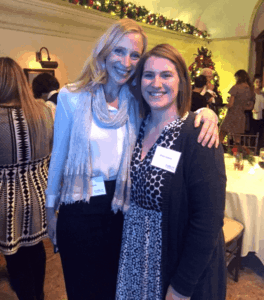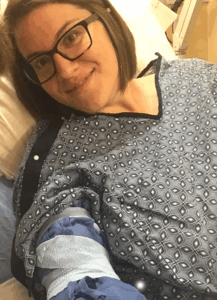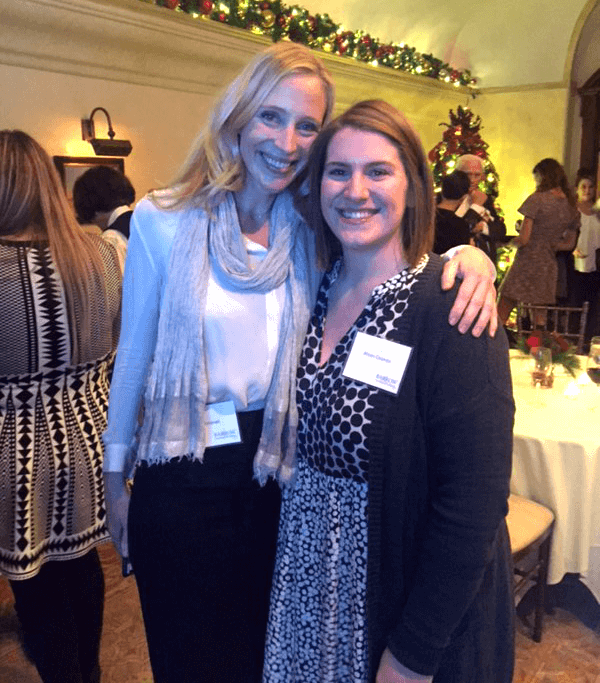In 2017, Alison Coombs was attending graduate school on the East Coast. She was living independently, pursuing a degree in art education—something she is deeply passionate about—and looking forward to the future. Alison never imagined she would experience a sudden headache that would turn her world upside down, plunging her into years of pain and uncertainty. That was until she found the Lewis Headache Center at Barrow Neurological Institute.
Changing Trajectories
Alison says the debilitating headache pain came out of nowhere and never went away. She spent years seeing different specialists, undergoing countless tests, and trying new treatments and therapies, but nothing seemed to help. Meanwhile, the pain was relentless, making day-to-day life extremely difficult.
“I knew I couldn’t sustain living alone anymore and needed more support. So, I moved back to Arizona to live with my parents. The headache and the associated disability changed the entire trajectory of my life,” she says.
Still, she wasn’t going to give up. “Going through all of this and still not having a diagnosis forced a resilience out of me. I had to dig deep, persist, and become a strong advocate for myself,” says Alison.
Moving in the Right Direction

Back in Arizona, Alison’s mother suggested making an appointment at the Lewis Headache Center. There, she met Kerry Knievel, DO, and immediately knew she had found the right provider.
“I could tell from that very first appointment how deeply Dr. Knievel cares about her patients and how much she advocates for them,” she says.
Dr. Knievel was the first provider in Alison’s years-long journey to suggest that a cerebrospinal fluid (CSF) leak could be causing her headache. CSF leaks occur when the fluid surrounding the brain and spinal cord escapes through a tear in the dura, or through an abnormal connection to a vein called a venous fistula. Although it wasn’t an easy process, ultimately, Dr. Knievel was able to help Alison get a definitive diagnosis and the treatment that she needed.

Alison underwent spinal surgery to seal off the CSF venous fistula. She also received multiple blood patches, which involve injecting blood into the space outside the spinal cord to create a patch. She hoped this would finally end the pain that was causing so much chaos in her life.
A New Landscape
Although the surgery and blood patches were successful, Alison still experienced residual headache pain. Dr. Knievel seamlessly shifted strategies to begin treating her for rebound intracranial hypertension, occipital neuralgia, and migraine. She assured Alison that she would be by her side to help navigate this new landscape. Still, it was crushing.
“The onset of my headache occurred when I was 29, and I’ve been experiencing debilitating pain for the entirety of my thirties—a time when most people are developing their careers, forming relationships, and starting families. I really couldn’t do those things, and I still didn’t know what might be possible for my future,” she says.
Alison shares that it also took a toll on her creativity as an artist and art educator. “I had these images in my mind of Frida Kahlo and Henry Matisse, who created significant artworks while navigating their chronic illnesses, but I couldn’t find a way to do it myself. It was heartbreaking to lose that connection to my sense of creativity, and I felt a lot of shame.”
A Different Perspective
One of the most important things Alison has learned is that treating headache requires a multidisciplinary approach. This is where the Lewis Headache Center’s Wellness Program came into play. Clinical psychologist Jennifer Gray, PhD, helped her reframe how she thought about pain. Physical therapist Juliana Kroese, who was instrumental in Alison’s rehabilitation after CSF leak surgery and in managing her headache, introduced her to the Center’s mindfulness and yoga for headache classes.
In combination with Dr. Knievel’s headache treatment, Alison concentrated on strengthening her mind-body connection and staying present, which led to something wonderful and unexpected. “I was able to feel my creative spark again, something I hadn’t been able to meaningfully engage with for a very long time,” she says. Alison is now returning to her graduate work, pursuing a doctorate in Art Education, while navigating the terrain of migraine and the aftermath of a CSF leak.


With support from generous Barrow Neurological Foundation donors, the Lewis Headache Center can provide more patients like Alison with life-changing treatment and care while advancing critical research into headache disorders.
Your support enables our physicians to accept the most challenging cases, push boundaries in research, and provide patients with life-saving treatments.



